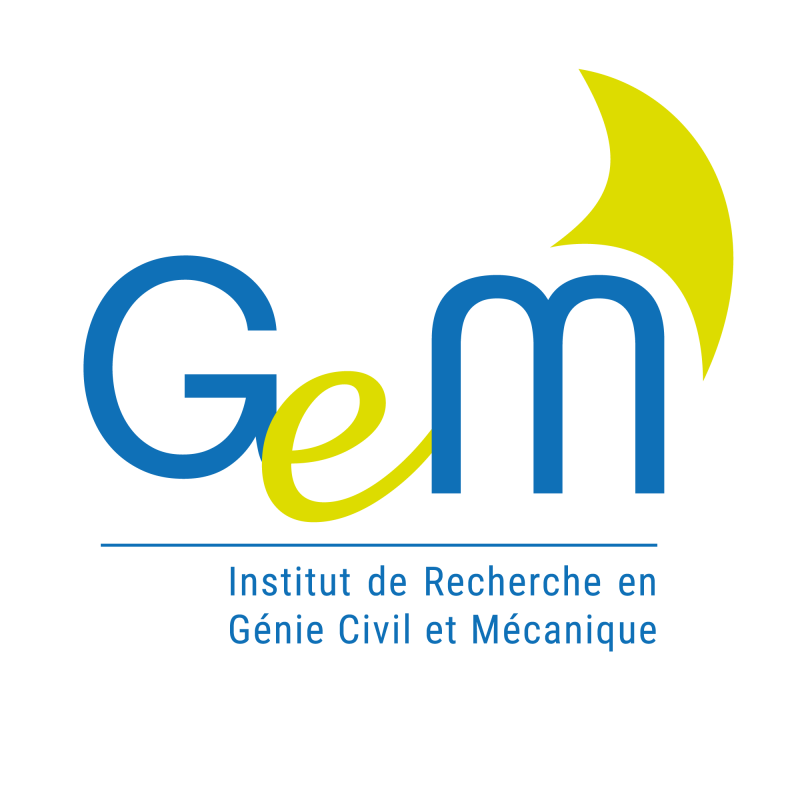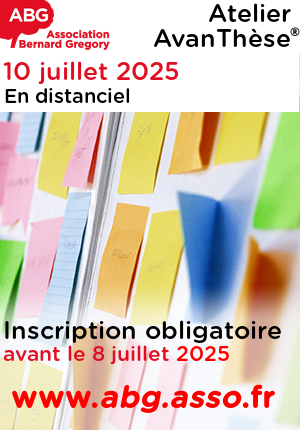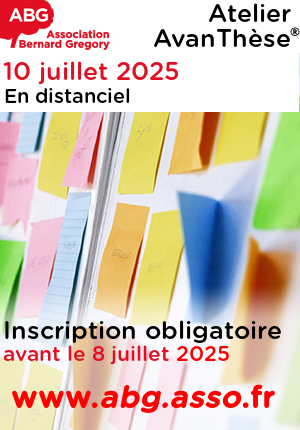Multi-scale study of chlorides diffusion in cement paste
| ABG-131724 | Thesis topic | |
| 2025-05-06 | Public funding alone (i.e. government, region, European, international organization research grant) |

- Civil engineering, construction and public works
- Materials science
Topic description
Design of concrete structures involve the consideration of their exposure to predict their service life from engineering or more sophisticated models if the effective diffusion coefficient is known. This parameter is generally obtained from natural diffusion or migration tests on concrete samples. Because of calibrations, most of the existing models models do not link the effective diffusion coefficient to the physical and chemical properties of the material at the molecular scale which affect the diffusivity in the gel pores of hydrates. In this project, we propose a multiscale model to predict the diffusion coefficient in cement pastes with partial substitution of blast furnace slag and metakaolin, for which the main hydrated products are calcium aluminosilicates hydrates (C-A-S-H). At first, we will study the diffusion of ions in gel pores on molecular models of C-(A)-S-H considering different pore solutions (bi- species and multispecies), different pore sizes, and different C/S and A/S ratios to cover the ranges observed in SCM blended cementitious materials. Scanning electron microscope image analysis coupled with energy-dispersive X-ray spectroscopy, together with 29Si and 27 Al nuclear magnetic resonance (NMR) measurements will validate the molecular models. The molecular approach will highlight the electrical double layer (EDL) phenomenon, whose effect on diffusion has been demonstrated. The influence of the EDL will be quantified experimentally using different methods of zeta potential measurement. Secondly, the nanoscale (~100 nm) will be taken into account with a nanoparticle interaction model. Several representative elementary volumes will be created to reproduce experimental observations from mercury intrusion porosimetry, nitrogen adsorption and proton NMR. Finally, based on a hydration model, we will make a transition to the scale of a representative elementary volume of cement paste using homogenization methods. Migration tests will permit to compare the diffusion coefficients calculated by our multi-scale model. The ambition of this project is to improve the fundamental understanding on the diffusion of ionic species in the cement paste and to answer the following question: how does the composition of the binder affect the diffusion in concrete at different scales? This study could pave the way for better concrete design with a view to a more accurate prediction of the service life of structures.
The aim of this project is to answer the following questions:
- How GGBFS and MK additions influence the chemical composition and structure of C-(A)-S-H in hydrated cement paste?
- How GGBFS and MK additions influence the microstructure of CP in terms of hydration products (quantity and morphology) and pore network ?
- How the microstructure of CP (from nanometers to micrometers) influence the global diffusion coefficient?
The aim of this PhD thesis to be carried out as part of this project is to provide answers to the above questions through an experimental and numerical study.
Experimental missions:
- preparation of slag and metakaolin cement samples,
- analysis of sample morphology using a scanning electron microscope (SEM) and energy-
- dispersive X-ray spectroscopy (EDS),
- analysis of sample porosity by mercury intrusion and nitrogen adsorption,
- analysis of sample composition by X-ray diffraction and thermogravimetric analysis,
- electroacoustics zêtametry measurements,
- chloride migration testing.
Numerical missions:
- running molecular dynamics simulations and analyzing trajectories,
- creating a nanoparticles interaction model,
- running and analyzing Fast Fourier Transform (FFT) calculations on a representative
- element volume,
- developing homogenization methods.
Starting date
Funding category
Funding further details
Presentation of host institution and host laboratory
Le GeM est une Unité Mixte de Recherche de Centrale Nantes, l’Université de Nantes et du CNRS. Il a été fondé en 2004, à partir du regroupement de laboratoires pré-existants.
L’objectif était de réunir au sein d’un même laboratoire l’ensemble des compétences de la métropole Nantes Saint-Nazaire dans le domaine du génie civil, de la mécanique des matériaux et des procédés, de la modélisation et de la simulation en mécanique des structures.
Le GeM est très impliqué dans la formation par la recherche : il compte une centaine de doctorants et porte plusieurs masters, majoritairement internationaux, en mécanique, génie civil, et technologie marine.
Dans le domaine du Génie civil, les activités de recherche ont pour principaux objectifs de contribuer à l’optimisation de la durabilité des ouvrages du génie civil (bâtiments, infrastructures et ouvrages d’art) et de limiter les impacts de ces ouvrages sur l’environnement.
Pour répondre à ces objectifs, les activités réalisées portent sur la caractérisation des propriétés mécaniques, physico-chimiques et de transferts (masse et chaleur) des (géo)matériaux, ainsi que sur l’analyse de leur cycle de vie.
Website :
PhD title
Country where you obtained your PhD
Institution awarding doctoral degree
Candidate's profile
The candidate must have:
- knowledge of materials physics/chemistry (ideally cementitious materials) and characterization methods,
- knowledge in numerical methods (skills in Python programming would be very appreciated)
- scientific rigor in preparing samples, using experimental equipment and processing data,
- scientific curiosity and a strong work ethic, Initial experience in a materials chemistry (general) and/or construction materials laboratory would be highly appreciated.
Vous avez déjà un compte ?
Nouvel utilisateur ?
Get ABG’s monthly newsletters including news, job offers, grants & fellowships and a selection of relevant events…
Discover our members
 Nokia Bell Labs France
Nokia Bell Labs France  Généthon
Généthon  Tecknowmetrix
Tecknowmetrix  PhDOOC
PhDOOC  CASDEN
CASDEN  Laboratoire National de Métrologie et d'Essais - LNE
Laboratoire National de Métrologie et d'Essais - LNE  SUEZ
SUEZ  Aérocentre, Pôle d'excellence régional
Aérocentre, Pôle d'excellence régional  ANRT
ANRT  CESI
CESI  ONERA - The French Aerospace Lab
ONERA - The French Aerospace Lab  ASNR - Autorité de sûreté nucléaire et de radioprotection - Siège
ASNR - Autorité de sûreté nucléaire et de radioprotection - Siège  TotalEnergies
TotalEnergies  ADEME
ADEME  MabDesign
MabDesign  Ifremer
Ifremer  Groupe AFNOR - Association française de normalisation
Groupe AFNOR - Association française de normalisation  Institut Sup'biotech de Paris
Institut Sup'biotech de Paris  MabDesign
MabDesign







